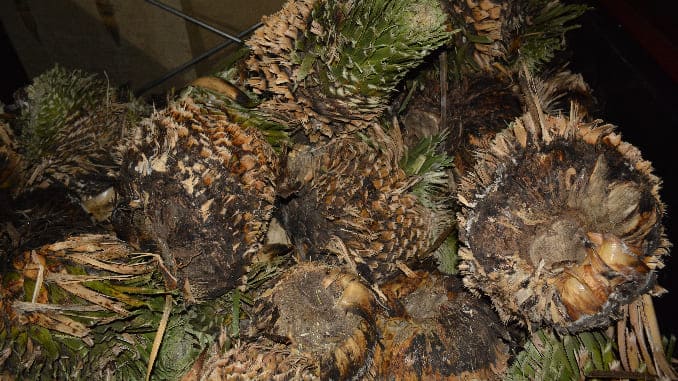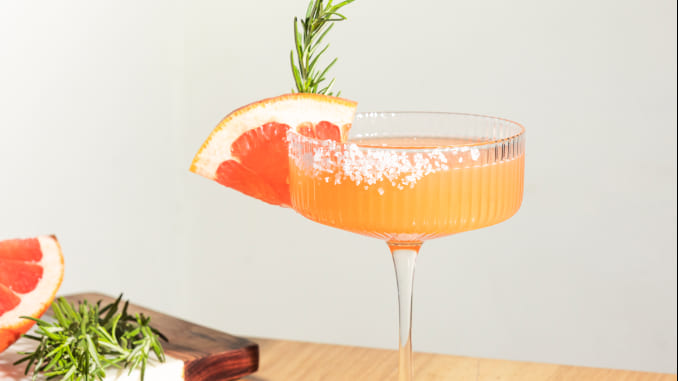Sotol: The Spirit of the Desert in Texas
Photo by Rashmi Narayan
Driving past the rugged landscape for a stargazing adventure in Big Bend National Park, I noticed a specific spikey plant with a tall stalk. Like many, I mistook it for agave. I soon discovered that it was in fact a plant called sotol and that it was the key ingredient in a special spirit.
In far West Texas, wild Dasylirion texanum (Texas sotol) grows in abundance. Beginning several centuries ago, the Chihuahuan indigenous people consumed sotol as a fermented, beer-like alcoholic beverage that was often associated with peasants or drunks. The Spanish introduced distillation techniques that turned sotol into the spirit we know today.
Desert Door Distillery launched in 2017 and is currently the U.S.’s only sotol distillery. It sits on the eastern edge of wild sotol country and aims to bring the plant into the modern American drinking limelight.
Sotol in Ancient Times
Native tribes in West Texas used sotol for many purposes: They spun it into clothing and made sturdy tools, weapons, spears and javelins. But most importantly, it was a source of food.
“It’s been around for thousands of years. [The native tribes] would dig holes, fill it with wood, burn the fire, place rocks… a few prickly pears and then the sotol plant [on top], [then add] foliage and dirt on top of that. [They would cook this] for days to make it more malleable,” said David Vincent, the general manager at Desert Door. “After cooking and juicing it, there’s an earthy nectar. This nectar would naturally ferment when it came into contact with the yeast in the air. It would have about three or four percent alcohol, enough to give them a buzz when it was… used in celebrations. It had several other uses… Sotol was also painted on the walls to show integral it was back then.”
Desert Door’s Push into Sotol
The founders of Desert Door, Brent Looby, Ryan Campbell and Judson Kauffman, are three former military veterans who met at the University of Texas. The trio had noticed that local beer was gaining popularity, and there was already a lot of wine making a splash in the region. But then, after visits to West Texas, they discovered sotol, which was being produced on an extremely small scale. They were then inspired to start their own distillery. Although there are several sotol producers in Mexico, Desert Door distillery use a different variety of the sotol plant.
Harvesting Sotol
“When they reach maturity around 10 to 15 years, we selectively wild-harvest this plant. The farther west you go, there are over a thousand plants per acre. It’s mainly a weed, which is why it is abundant,” said Vincent as he showed me the area where the plant is cooked. “The bigger the plant or heart, the better for us to distill it. It is more closely related to asparagus than it is to agave. It is, however, a distant cousin to agave.”

Taking only a small number of plants from each acre and leaving root systems intact allows this precious resource to remain wild and plentiful. The leaves are trimmed, and the heart of the plant is secured for transport to the distillery. Sotol is very sustainable, as the root of the plant is very deep. It regenerates every ten years.
Distilling Sotol
The hearts of the plant are pressure-cooked for approximately three to four days, and then they go through the juicer. The nectar is transferred to a fermentation tank. Organic yeast is introduced to the mash, and this is where the magic happens. Once the alcohol content reaches between three to four percent, it is brought to a hybrid pot and column still.
After water is introduced to achieve the desired proof, it is poured into new American oak barrels and aged for a year.
What Does It Taste Like?

The nectar itself is dense with earthy undertones of molasses and hay. I have been told that sotol grown in the U.S. is earthy in character, whereas Mexican sotol is smokier. On the nose, it is herbal with a hint of thyme. Though initially stronger on the herbal tones on the palate, it has a dry finish and a hint of pepper. The team at Desert Door loves using it to make palomas with grapefruit juice, lime juice and agave nectar.